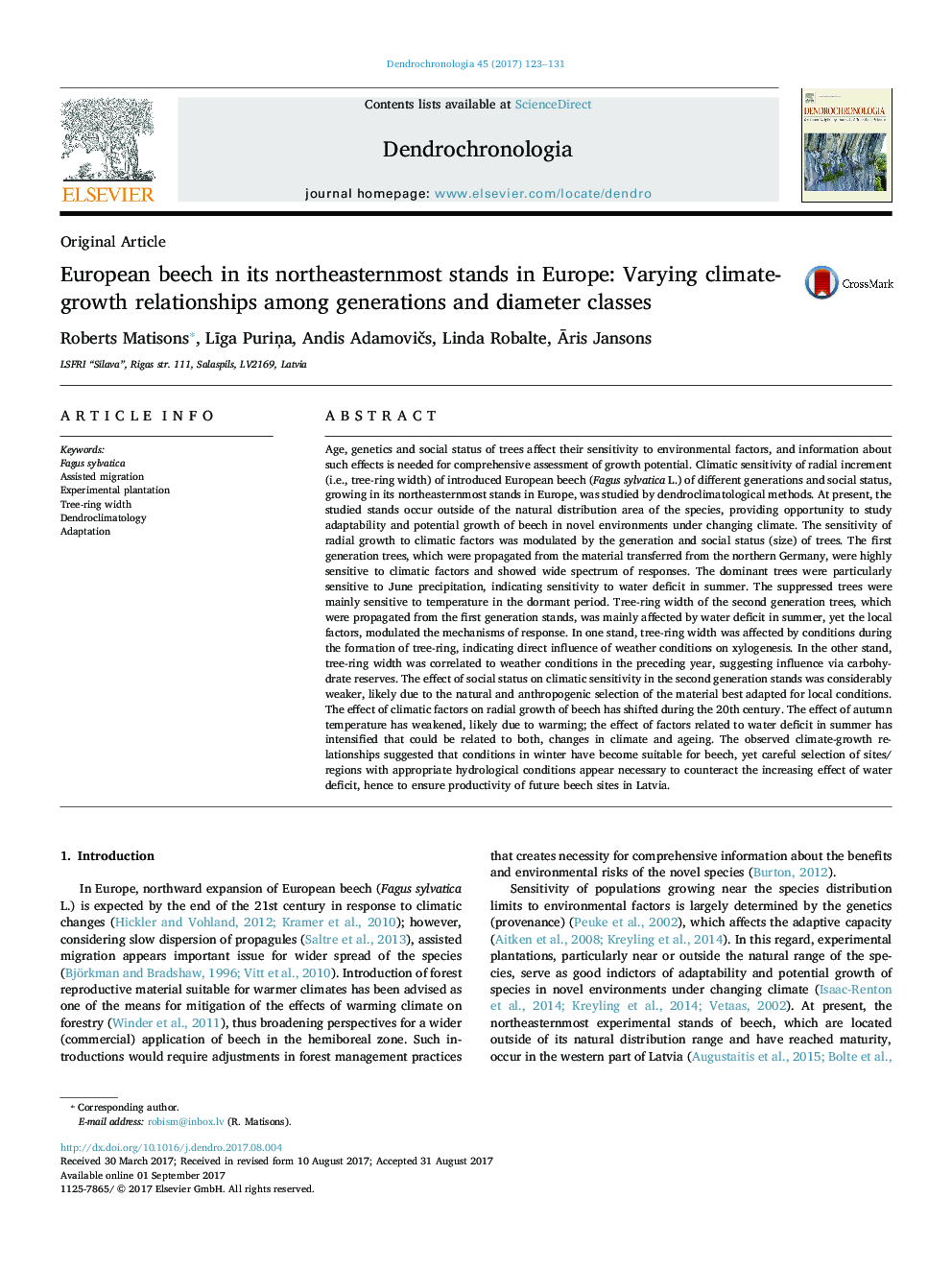| کد مقاله | کد نشریه | سال انتشار | مقاله انگلیسی | نسخه تمام متن |
|---|---|---|---|---|
| 6458980 | 1421196 | 2017 | 9 صفحه PDF | دانلود رایگان |
- Tree-ring width of beech was mainly sensitive to water deficit in summer.
- First generation trees were more sensitive to climatic factors.
- Generally, dominant trees were more sensitive to water deficit.
- Winter temperature was significant for the supressed first generation trees.
- The climatic forcing of growth has shifted due to climatic changes and ageing.
Age, genetics and social status of trees affect their sensitivity to environmental factors, and information about such effects is needed for comprehensive assessment of growth potential. Climatic sensitivity of radial increment (i.e., tree-ring width) of introduced European beech (Fagus sylvatica L.) of different generations and social status, growing in its northeasternmost stands in Europe, was studied by dendroclimatological methods. At present, the studied stands occur outside of the natural distribution area of the species, providing opportunity to study adaptability and potential growth of beech in novel environments under changing climate. The sensitivity of radial growth to climatic factors was modulated by the generation and social status (size) of trees. The first generation trees, which were propagated from the material transferred from the northern Germany, were highly sensitive to climatic factors and showed wide spectrum of responses. The dominant trees were particularly sensitive to June precipitation, indicating sensitivity to water deficit in summer. The suppressed trees were mainly sensitive to temperature in the dormant period. Tree-ring width of the second generation trees, which were propagated from the first generation stands, was mainly affected by water deficit in summer, yet the local factors, modulated the mechanisms of response. In one stand, tree-ring width was affected by conditions during the formation of tree-ring, indicating direct influence of weather conditions on xylogenesis. In the other stand, tree-ring width was correlated to weather conditions in the preceding year, suggesting influence via carbohydrate reserves. The effect of social status on climatic sensitivity in the second generation stands was considerably weaker, likely due to the natural and anthropogenic selection of the material best adapted for local conditions. The effect of climatic factors on radial growth of beech has shifted during the 20th century. The effect of autumn temperature has weakened, likely due to warming; the effect of factors related to water deficit in summer has intensified that could be related to both, changes in climate and ageing. The observed climate-growth relationships suggested that conditions in winter have become suitable for beech, yet careful selection of sites/regions with appropriate hydrological conditions appear necessary to counteract the increasing effect of water deficit, hence to ensure productivity of future beech sites in Latvia.
Journal: Dendrochronologia - Volume 45, October 2017, Pages 123-131
